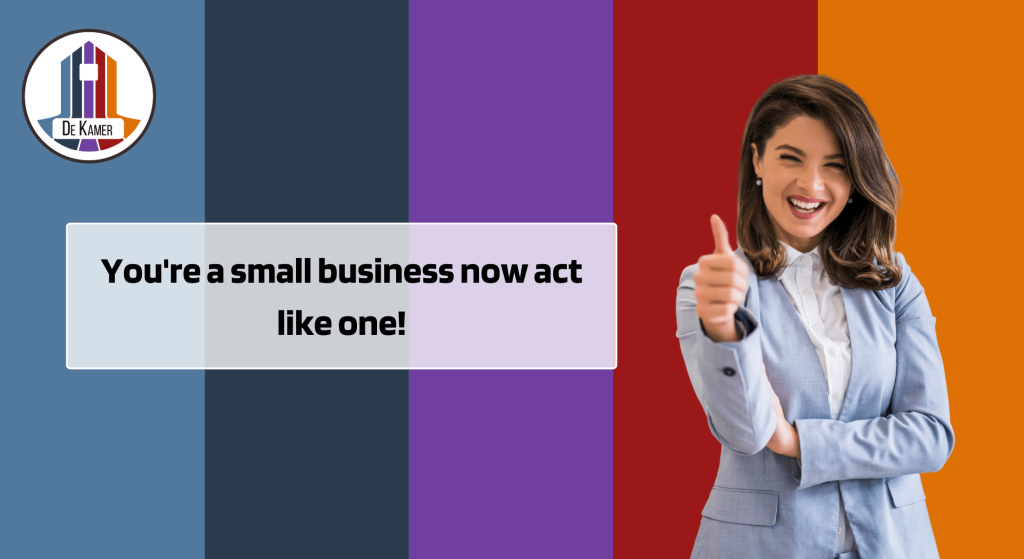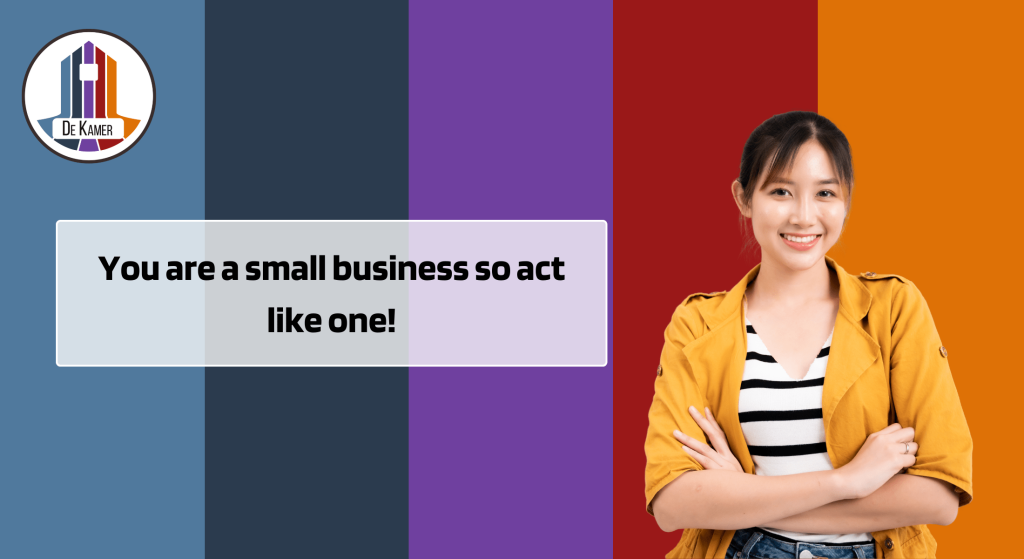This blog was first published in Dutch on Smart WP
Aristotle said: “happiness is not pleasure, nor is it virtue. It is the exercise of virtue. Happiness cannot be achieved until the end of one’s life.” Which is a posh way of saying what Jeannine van der Linden, founder of DeKamer, says she heard from her grandfather. “He always said, there comes a time when you have no more problems and worries. You usually notice that all your problems are gone two, three minutes after they put you in the ground”.
This framing informs her approach to happiness: it comes and goes, it is not a goal or a state that is achieved and stagnant, it changes. People cannot be happy all the time, and happiness does not always take the same form for everyone.
Jeannine van der Linden and Natalie du Toit, Olympic and Paralympic amputee swimmer and inclusion motivational speaker, spoke about happiness within a coworking space.
How to measure happiness in coworking spaces
According to Jeannine, once a coworking space sets off to achieve happiness within the space, it is already heading in the wrong direction. She says that “when setting out to specifically achieve happiness within your coworking space, it disappears under your hands”.
Creating happiness is not a process you can usefully ask your coworkers questions about in survey form, explains Jeannine. The best way to achieve happiness within a coworking space is through shared experience or shared goals. Natalie agrees with this statement and says that “a coworking space can aim to make someone happy by making them feel like a success”.
Natalie explains that even something as simple as completing a to-do list can make someone feel successful. And that happiness looks different to everyone. She adds on that finding happiness ultimately lies with the individual, but that does not mean that a coworking space cannot form part of the journey.
How to create happiness in coworking spaces
As Jeannine mentioned, happiness – from her experience – is usually something that comes from the shared experience and shared goals, often within a community. She tells many stories about how members of her coworking community came together in tough times, like the time the plaster fell off the wall or the heating stopped working.
Though these incidents weren’t planned, they formed an experience that her coworkers were able to bond over. A lot can be said for shared trauma, she explains while laughing, but ultimately it is the time spent together.
She also adds that when a community building project is planned, it seems to not have the same effect as when something happens spontaneously. She found — at her coworking space, at least – that happiness comes from organic experiences.
Natalie speaks about how inclusivity can make a difference. To her, as a disabled person, she wants to feel comfortable in a space. She explains that spaces who cater to and plan for disabilities and are more inclusive can ultimately lead to more happiness in a coworking space.
To Natalie, inclusivity, diversity, equity, and accessibility should be a driving force for coworking spaces. She explains that having a clear indication, whether online like on a website or a poster on the wall, of the values and also the attributes of a space can also lead to happiness. Her reasoning is that not every coworking space is the same, and that not every person has the same needs; therefore if they know what the coworking space is like before they make use of it, coworkers can be happier as they feel more comfortable.
Another form of creating happiness is by ensuring that the messaging is correct. This can ensure that the inclusivity of the coworking space is visible from the start.
Here is an example how the correct language can make coworkers feel more included:
Jeannine and Natalie have been part of the ECA (European Coworking Assembly) initiative: the IDEA (inclusion, diversity, equity, and accessibility) handbook. During the process Jeannine wrote some copy for a website page and used the phrase: “bring your whole self”.
To Natalie, who lost part of her leg in a motorcycle accident, this phrase meant something different, as one could argue she is not “whole”. This type of language does not feel inclusive and can offend others. But, a community – the coworkers, coworking space owner and manager – can work together to ensure that the right messaging comes across. Receiving advice from coworkers should be taken seriously but also as a way of learning.
Now, when you navigate to the page ECA, you will notice that it says: “bring your unique self”. This is an excellent example of how teamwork can ensure future happiness.
Tools for happiness in coworking spaces
There are many tools that coworking spaces can use to work towards happiness in the coworking space. Jeannine says “a type of interrogation of yourself (a coworking space owner) is needed”. She says this because for her it is important to understand how to make an inclusive space, but also that biases can have an impact on how a space is run.
Natalie agrees with Jeannine and says that “in order to compete in the Paralympic games you’re not classed on your disability but rather classed on your ability.” This is a mindset that can help grow a coworking space into a space that is geared towards growth, inclusion, and happiness.
Both Jeannine and Natalie agree that training is a way for teams to learn how to handle situations and how to think outside of the box in terms of inclusion.
Natalie points out how the ECA IDEA Handbook can be a great starting point for any coworking space looking to improve their inclusivity in their coworking space.
Ultimately, there are many tools available to coworking space owners that can help them towards their end goal of having happy coworkers.


